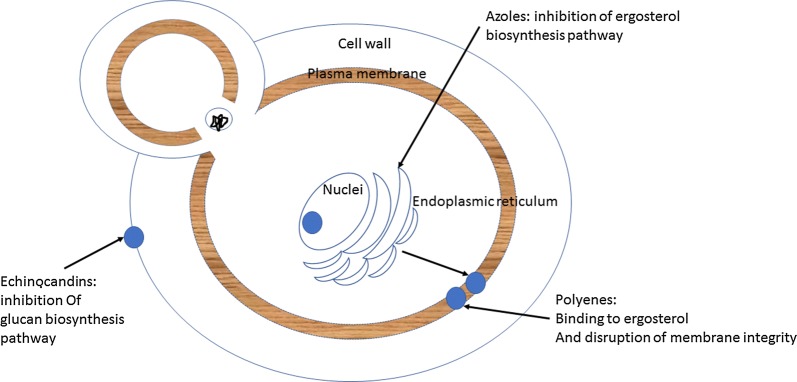Fig. 1.
Mechanism of action of traditional antifungal agents on cellular targets. Azoles inhibit the ergosterol synthesis in the endoplasmic reticulum of the fungal cell. They act by interfering with the enzyme lanosterol 14-alpha demethylase, involved in the transformation of lanosterol into ergosterol. Polyenes act in the fungal membrane by binding to ergosterol and causing disruption of the membrane structure, promoting extravasation of intracellular constituents and consequent cell death. Echinocandins inhibit 1,3-beta-d-glucan synthase, thereby preventing synthesis of glucan, which is present in the cell membrane of fungi [18]

